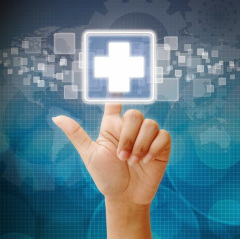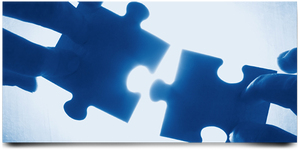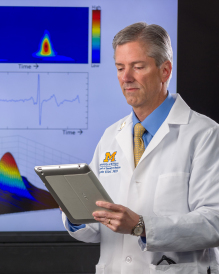 In healthcare, we constantly seek new ways to deliver and improve care. Countless ideas have already been tried and tested, and people often think that coming up with the next great innovation requires thinking ‘outside of the box.’ This notion has been instilled in most of us from a young age, and those in all industries – not just healthcare – often strive to show their creativity through this approach. However, in my experience, thinking outside of the box doesn’t always lead to the best new ideas. Sometimes, we need to focus on thinking better inside the box.
In healthcare, we constantly seek new ways to deliver and improve care. Countless ideas have already been tried and tested, and people often think that coming up with the next great innovation requires thinking ‘outside of the box.’ This notion has been instilled in most of us from a young age, and those in all industries – not just healthcare – often strive to show their creativity through this approach. However, in my experience, thinking outside of the box doesn’t always lead to the best new ideas. Sometimes, we need to focus on thinking better inside the box.
Tag Archives: data
Keeping up with (and Getting Ahead of) an Ever-Changing Healthcare Model
 At this year’s annual HIMSS conference, a common topic of discussion was around how to continue to bring the technological and medical aspects of healthcare together to evolve, grow and support one another.
At this year’s annual HIMSS conference, a common topic of discussion was around how to continue to bring the technological and medical aspects of healthcare together to evolve, grow and support one another.
Each semester, I share with my Health IT students the many reasons that it is such an exciting time to be in healthcare. As we transition from a volume-based to a value-based incentive model, healthcare is going to look significantly different by 2020. This transformation is no longer a wish, it is no longer an option; it is our collective future. People who were previously one-foot-in and one-foot-out will be fully planted in the value-based healthcare model.
Why 2015 is the Worst Time to be a Physician
With the ONC’s recent release of their 10-year interoperability vision, it might seem like the industry is starting to make things easier for clinicians. In reality, 2015 is starting off to be one of the worst times ever to be a physician. Interoperability is a critical issue to support a transition from fee-for-service to value-based care. Physicians will eventually be reimbursed around their ability to impact clinical outcomes, so the need for clinically relevant information at their fingertips is mission critical.
Healthcare in South Africa – Two Systems, Common Challenges
When it comes to mHealth, most industrialised nations such as the U.S. and Europe have a head start. Money for healthcare technology investments is available, the infrastructure is in place, and most of the population is already engaged in the healthcare system.
As a country of about 52 million people, South Africa shares many characteristics with its larger brethren. There is a mix of public and private healthcare providers and health insurance plans, physician shortages in key areas, and South Africa is beset by many of the same chronic diseases that industrialised countries face (cardiovascular and obesity-related diseases, diabetes, etc.).
Creating a Friendly Environment for Adoption of Clinical Decision Support
In recent years, our ability to stream large amounts of data in real-time has improved dramatically. This enhancement can transform how clinicians offer care by sourcing unprecedented opportunities for clinical decision support. However, the capability to process, store, and display data in and of itself does not transform care. Rather, it is how the clinicians adopt and apply decision support that will make all the difference to patients. However, the current environment must be altered to create a clinical decision support-friendly climate.
What stage of “Meaningful Interoperability” are you?
 The Office of the National Coordinator for Health Information Technology (ONC) just released what it calls “A 10-Year Vision to Achieve an Interoperable Health IT Infrastructure.” The directive generating the most attention calls for “a common set of electronic clinical information…at the nationwide level by the end of 2017.” According to ONC, the common data set would consist of about 20 basic elements, such as patient demographics and lab test results.
The Office of the National Coordinator for Health Information Technology (ONC) just released what it calls “A 10-Year Vision to Achieve an Interoperable Health IT Infrastructure.” The directive generating the most attention calls for “a common set of electronic clinical information…at the nationwide level by the end of 2017.” According to ONC, the common data set would consist of about 20 basic elements, such as patient demographics and lab test results.
At first blush, the ONC directive is a small step in the right direction, but sets the bar awfully low. Rest assured that vendors will consider 20 basic elements the maximum data set, not the minimum. A more effective approach would, for example, specify vocabularies (LOINC, RxNORM), document types (JSON, XML) and transport mechanisms (HTTPS or other TLS) to be used when sending or receiving data instead of focusing on the data elements themselves.
Transformation in 2015: Focusing Technology on the Patient
 We are currently experiencing the biggest transformation in healthcare ever. Technology plays a significant role as an enabler of this transformation, but will not drive it alone. Improving patient care and driving toward patient engagement are crucial goals in this next phase of the healthcare industry. To make adoption ubiquitous and implementation effective, there are several things we should focus on as we dive into 2015:
We are currently experiencing the biggest transformation in healthcare ever. Technology plays a significant role as an enabler of this transformation, but will not drive it alone. Improving patient care and driving toward patient engagement are crucial goals in this next phase of the healthcare industry. To make adoption ubiquitous and implementation effective, there are several things we should focus on as we dive into 2015:
Harnessing the Power of Big Data with Digital Health Partnerships
 In today’s digital world, electronic patient data is growing exponentially and moving faster than healthcare organizations can imagine. At the same time, clinicians suffer from information overload, and high-volume and increasingly complex clinical patient loads, alongside dwindling time and resources.
In today’s digital world, electronic patient data is growing exponentially and moving faster than healthcare organizations can imagine. At the same time, clinicians suffer from information overload, and high-volume and increasingly complex clinical patient loads, alongside dwindling time and resources.
Now more than ever, the pressure is building to harness the power of big data and digital technologies to help clinicians make faster, patient-centric decisions that increase quality of care and enhance health outcomes all while decreasing costs.
Data, Data Everywhere and Not a Drop to Drink
 Clinicians want two things from data. On an individual patient level, they need to be able to see the data whenever and wherever they want – in a clean at-a-glance format and with essentially zero lag time. And at a cohort (population) level, they want the data presented as meaningful information in a way that enables conclusions, decisions, and actions about a group of patients.
Clinicians want two things from data. On an individual patient level, they need to be able to see the data whenever and wherever they want – in a clean at-a-glance format and with essentially zero lag time. And at a cohort (population) level, they want the data presented as meaningful information in a way that enables conclusions, decisions, and actions about a group of patients.
These statements may seem like self-evident Data 101 to many of you, but in my decades of experience working clinically as an emergency physician and being responsible for operations of multiple emergency departments, it is clear that we have not delivered on this vision. In fact, the healthcare world lags other industries by 15-20 years in the availability, presentation, and use of information. Although our industry is catching up, there is still more effective use of information technology in banking, aviation, on-line retail, and a multitude of other industries. Even though many of the concepts of optimum presentation and use of data have been around for decades – the quest for electronic health records began in the 1980s – their breadth of execution and the realization of their value propositions have not been sufficient to become the norm. Healthcare has moved at a glacial speed of change, at least until recently.
Mobile solutions that support our clinical (and life) workflow
There are more mobile devices than there are people on the planet. Many of us look at our phones more than 70 times a day. We bring them with us everywhere we go – to the movies, to our children’s soccer games and to work.
Many of us even have work environments that allow us to ‘bring your own device.’ If that is not an option, our work devices (thankfully!) are looking more and more like our personal devices. And in healthcare, we are now successfully addressing challenges to building mobile healthcare solutions that support our natural use and knowledge of these devices in our life flow.
